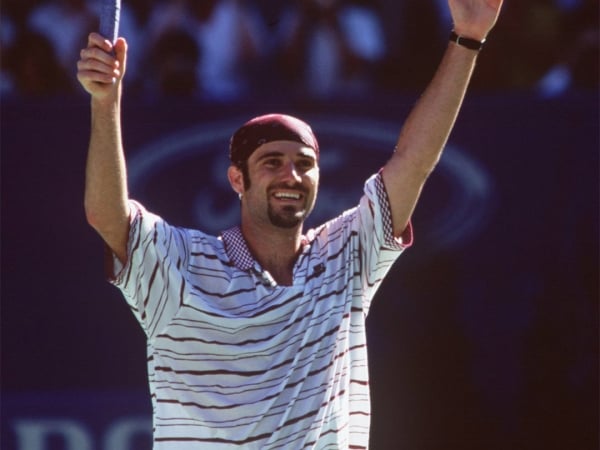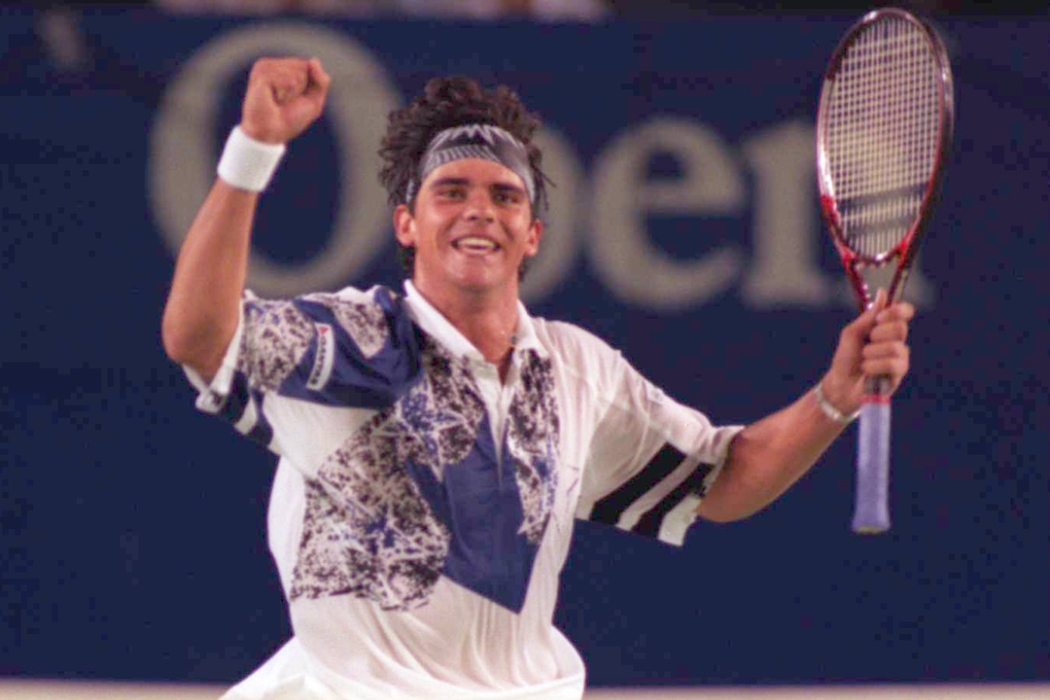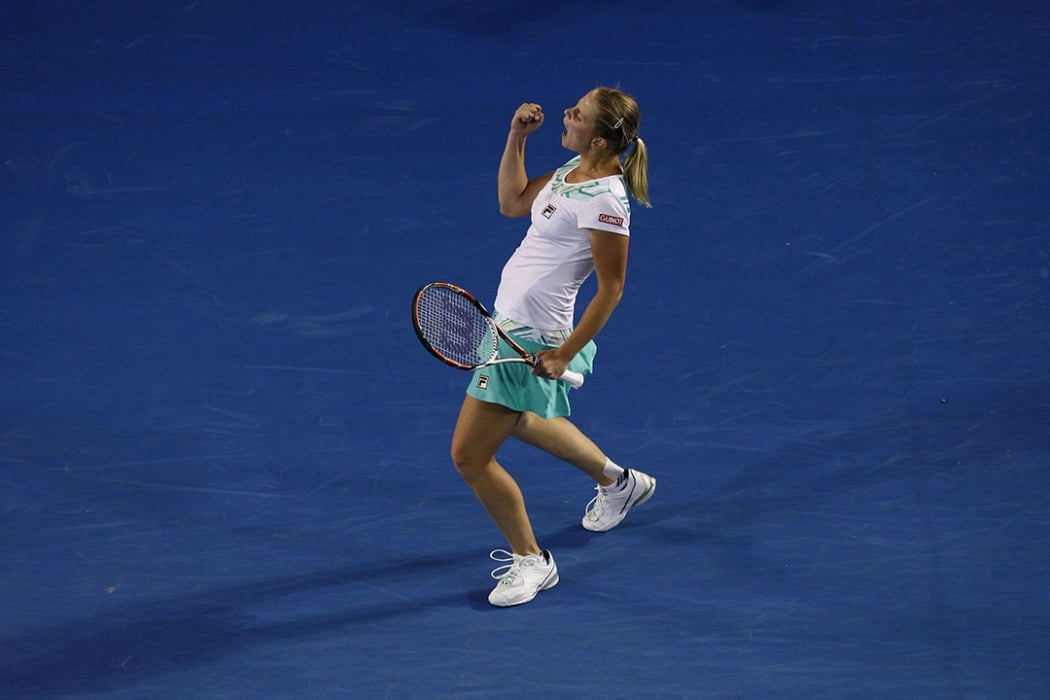In a year of significant change for the Australian Open, you couldn’t have asked for a bigger or better men’s final than what eventuated in 1995.
Pete Sampras met Andre Agassi in a blockbuster, pitting the world No.1 and No.2 against one another – the latest installment of what was then the premier rivalry in men’s tennis.
At this point, top-ranked Sampras narrowly led the head-to-head series 7-5, and 2-1 at the majors, and had won their most recent Grand Slam meeting, at 1993 Wimbledon, in five sets.
But he was unable to stop the irresistible force that was Agassi at Australian Open 1995 – Agassi’s debut at a tournament he would come to rule.
This final is now available to watch in full on the Australian Open YouTube channel, one of a growing number of full matches uploaded to the channel from the archives.
Suzi Petkovski, then the editor of Australian Tennis Magazine, was inside Rod Laver Arena watching as Agassi powered to a 4-6 6-1 7-6(6) 6-4 triumph.
"They were both at their career peaks, or peaking, when they met in Melbourne here,” she recalled.
“Agassi was 24, Sampras was 23. It was the best mash-up of opposites since Borg-McEnroe 15 or so years before, and it was a hugely-anticipated No.1 v No.2 [match-up].
"This was Agassi's belated [Australian Open] debut. He has since said many times that a big career regret is that he did not play the Australian Open earlier, because the conditions were tailor-made for him.
“He realised almost as soon as he got here that this would be a happy hunting ground for him.”
“Change agent”
The game was arguably at a cross-roads, and less than a year earlier, Sports Illustrated’s 9 May 1994 cover feature asked the question: “Is Tennis Dying?”
Paul McNamee was the new tournament director for AO 1995 and was an innovative marketer and promoter, unveiling the iconic “serving man” logo, introducing “Fan Fest” to encourage more interaction between players and fans, and tapping into the TV ratings power of night tennis.
LISTEN: Paul McNamee on The Sit-Down podcast
Agassi’s debut dovetailed perfectly with all of it.
"Agassi brought the box-office. He was the headline act for the AO in a year of big change,” Petkovski said.
"Blockbusters were definitely shifting more to night. In the opening round in 1995, we had two-time champion Stefan Edberg up against 18-year-old Mark Philippoussis. It drew a huge TV audience for a first round. We also had that Agassi-Rafter fourth-round blockbuster.
"The match of the tournament was the Sampras-Courier [night-time] five setter, so again, the best matches seemed to be at night.
"Agassi pretty much ended the practice of top players only playing one night match. At that point, because the semis and finals were day time, the players didn't want their schedules mucked up too much.
“But Agassi didn't know the 'normal' schedule. Being the night-owl from Las Vegas, and McNamee being the new tournament director, [McNamee was like] 'Hey Andre, want to play another match at night? And he said, 'yeah sure, why not?'.
“Because he went on to win the whole thing, it was like, OK, all bets are off – players can play more than one night match. And that led to the gradual and inevitable shift to night finals.”
Appropriately, the first Australian Open night-time semifinal, in 2000, featured none other than Agassi and Sampras.
Agassi also attracted new audiences to the tournament.
Gone were the denim shorts and long dyed hair of his early days on tour, but he nevertheless arrived at Australian Open 1995 wearing a bandana and earrings while also sporting sideburns and a beard.
"His look was very distinctive,” Petkovski noted. “He was galvanising and attractive to young kids, because he said, you can be a rebel and play tennis. You don't have to wear a white polo shirt and baggy white shorts.
“So he spoke to the youth.”
“Cosmic signs”
Agassi tore through to the final without losing a set, conceding a measly average of 7.33 games per match. He bagelled Pat Rafter and Yevgeny Kafelnikov, respectively, in the third sets of their fourth-round and quarterfinal matches. He spent a cumulative total of just over eight hours on court to reach the final.
Sampras, meanwhile, laboured for more than 14 hours. He was forced to recover from two-sets-to-love down against both Magnus Larsson in the fourth round, and Courier in that emotional quarterfinal.
When they faced off on the final Sunday, Agassi’s extra freshness proved telling.
"He described the stadium as 'absolutely beautiful'. He said the court surface, paraphrasing, could have been made-to-order for him. He loved the heat, as we know; the fan support for him was crazy,” Petkovski said of Agassi.
“And he just missed the Great Flood of Flinders Park – in the semifinal against Aaron Krickstein, he was up 6-4 6-4 3-0, and Krickstein pulled out with a sore groin. Moments later, the heavens opened, and Rod Laver Arena flooded. So he escaped that just in time.
"This was another sort of cosmic sign that things were aligning perfectly for Agassi."
The final
Although Sampras won the opening set – the first Agassi had lost in Melbourne – the world No.2 rebounded strongly, racing through the second set for the loss of only one game.
"There was no nerves at all; they'd played each other since childhood and they were veterans of Grand Slam finals. This was Agassi's sixth, and Sampras' seventh,” Petkovski said.
“[Watching back] I also notice how little emoting is going on, compared with today. There's no fist-pumping or war cries.
“But there's no mistaking the intensity and how much they both wanted to win.”

According to Petkovski, the third set was the crux of the match. Tight throughout, a tiebreak was required, which Agassi led 3-0 – only to lose six of the next seven points. Facing two set points which would have given Sampras a two-sets-to-one lead, Agassi rose to reel off four consecutive points, irreversibly shifting the momentum.
"Amazingly, Sampras, who was the world No.1 and the best server in the game, went 0-5 in tiebreaks at that Aussie Open,” Petkovski observed.
"Pete, we could see, especially in that third set as his level ebbed and flowed, was emotionally if not physically spent. He seemed a touch reactive in the final stages, whereas Agassi's full-blooded drives and his aggressive footwork going after winners, was overwhelming in the end.
“And Andre finished with an ace.”
The aftermath
Agassi’s Australian Open 1995 victory followed his triumph at the 1994 US Open, the first time he’d reached, and won, back-to-back Grand Slam finals.
It set the stage for the incredible year that followed; Agassi rose to world No.1 for the first time in April, and finished with a stellar 73-9 record – the most matches he’s ever won in a single season – and seven tournament titles.
He dominated the North American summer hard-court swing, winning Washington DC, Canada, Cincinnati and New Haven and building a 26-match winning streak en route to the US Open final.
Sampras snapped it with a shock win in that 1995 final in New York, a result Petkovski remembers sending Agassi into a “tailspin”.
“He did not make another major final until Roland Garros 1999,” said Petkovski of Agassi, who fell as low as world No.141 in November 1997.
Yet in 1999, Agassi hit a new zenith. Beginning with Roland Garros, a triumph which saw him complete the Career Grand Slam, he reached four consecutive major finals, winning three.
The third of those was Australian Open 2000, commencing a golden run at the event during which he also won the 2001 and 2003 titles. Given he missed the 2002 edition, he went unbeaten at the AO in four years, another 26-match winning streak ultimately snapped by Marat Safin in the 2004 semifinals.
The Australian Open is Agassi’s best Grand Slam tournament, both in terms of titles won (four) and winning percentage (90.6%). He finished his career with a 48-5 record at Melbourne Park.
The 1995 final, notably, remains the only time he beat Sampras in a major final.



